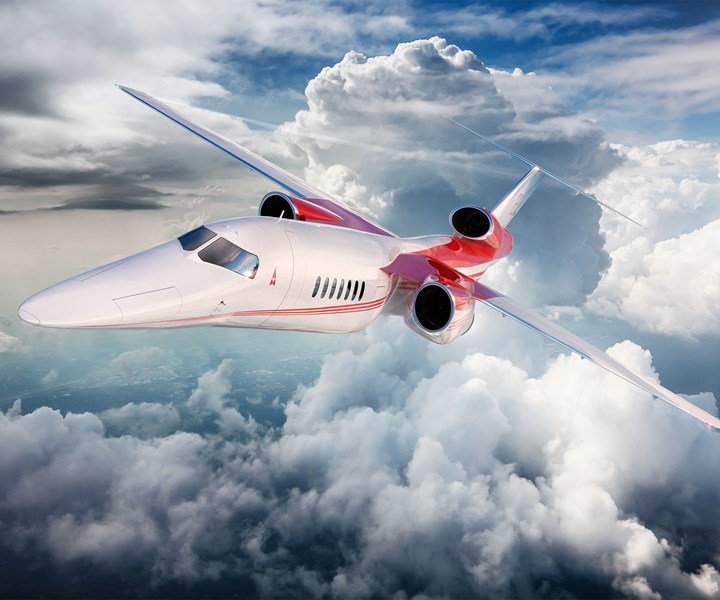Aerion Supersonic selects Potez Aéronautique as AS2 supplier
Aerostructures supplier Potez Aéronautique will design the doors of the AS2 supersonic business jet.

Source | Aerion Supersonic
Supersonic business jet developer Aerion Supersonic (Reno, Nev., U.S.) announced on Dec. 23 that it has selected Potez Aéronautique (Aire-sur-l’Adour, France) to design the doors of the AS2, the first privately built supersonic business jet. The 12-passenger business jet is scheduled to begin flight testing in 2024.
Potez Aéronautique is a world-class manufacturer of complex aerostructure assemblies and a specialist in design and build work packages for aircraft doors.
“Potez is an incredibly innovative company with decades of proven experience and successful program performance,” says Tom Vice, Aerion CEO. “We are excited to have Potez on the AS2 team for the design and development of the aircraft doors, including the main passenger entry door.”
“… We are very proud and enthusiastic about partnering with Aerion to contribute to the success of the ambitious and pioneering AS2,” says Roland and Antoine Potez, president and CEO of Potez Aeronautique.
Additional recently announced partners for the AS2 include Safran, designing the engine nacelles, braking system and landing gear systems; GKN Aerospace, designing and developing the empennage and electrical wiring interconnection systems; and Spirit AeroSystems, designing the pressurized fuselage.
Related Content
-
ASCEND program update: Designing next-gen, high-rate auto and aerospace composites
GKN Aerospace, McLaren Automotive and U.K.-based partners share goals and progress aiming at high-rate, Industry 4.0-enabled, sustainable materials and processes.
-
Plant tour: Joby Aviation, Marina, Calif., U.S.
As the advanced air mobility market begins to take shape, market leader Joby Aviation works to industrialize composites manufacturing for its first-generation, composites-intensive, all-electric air taxi.
-
Manufacturing the MFFD thermoplastic composite fuselage
Demonstrator’s upper, lower shells and assembly prove materials and new processes for lighter, cheaper and more sustainable high-rate future aircraft.

.jpg;width=70;height=70;mode=crop)














